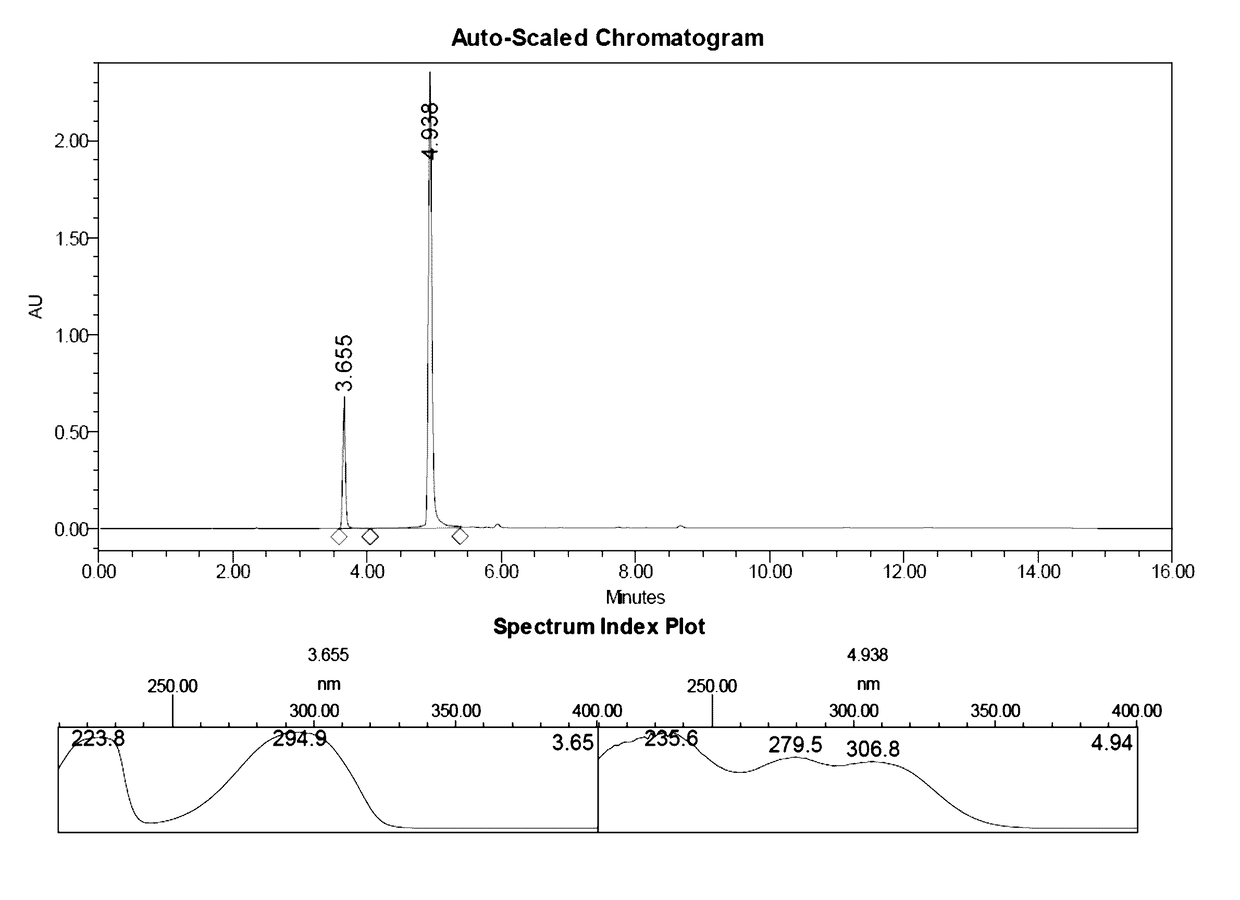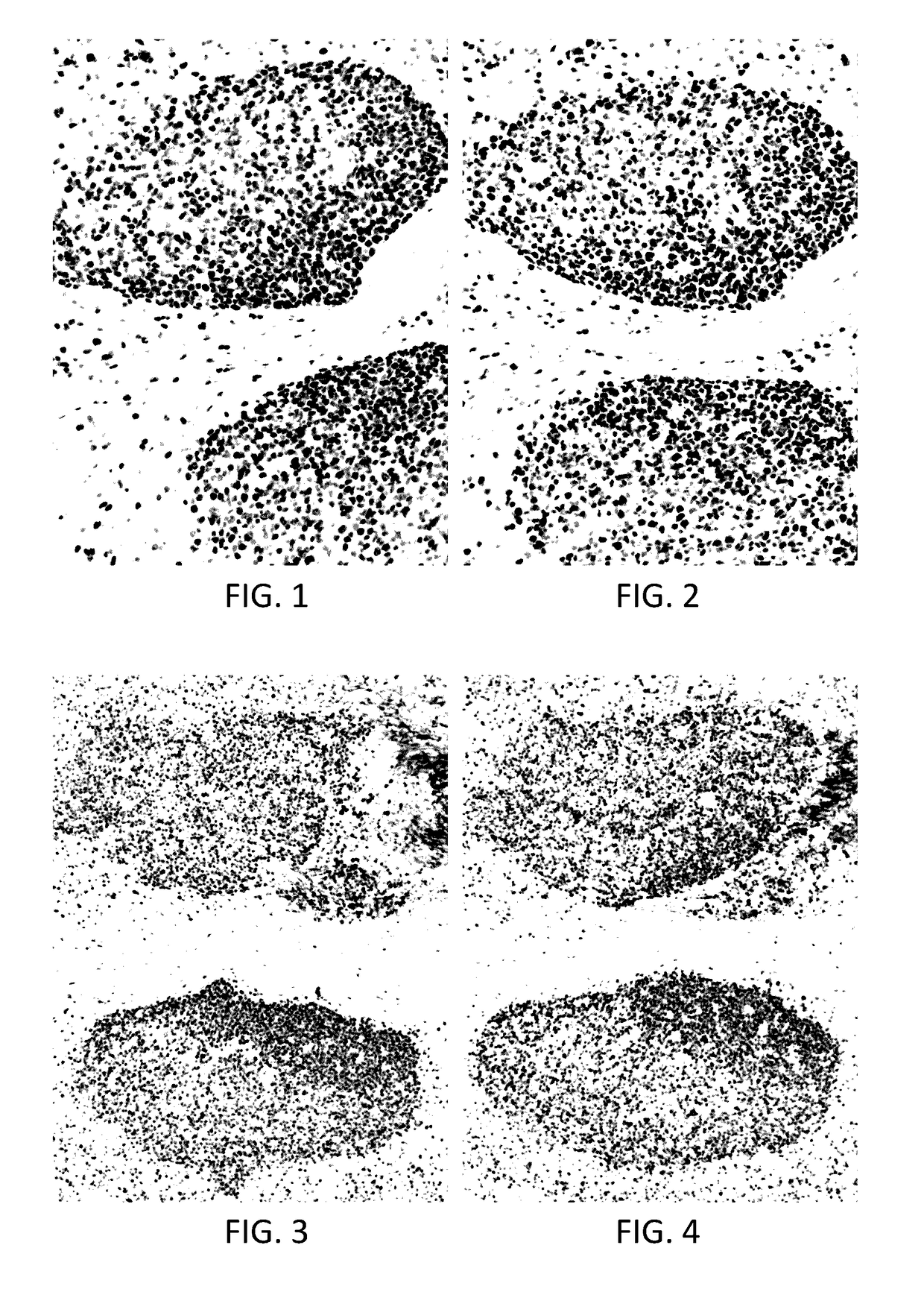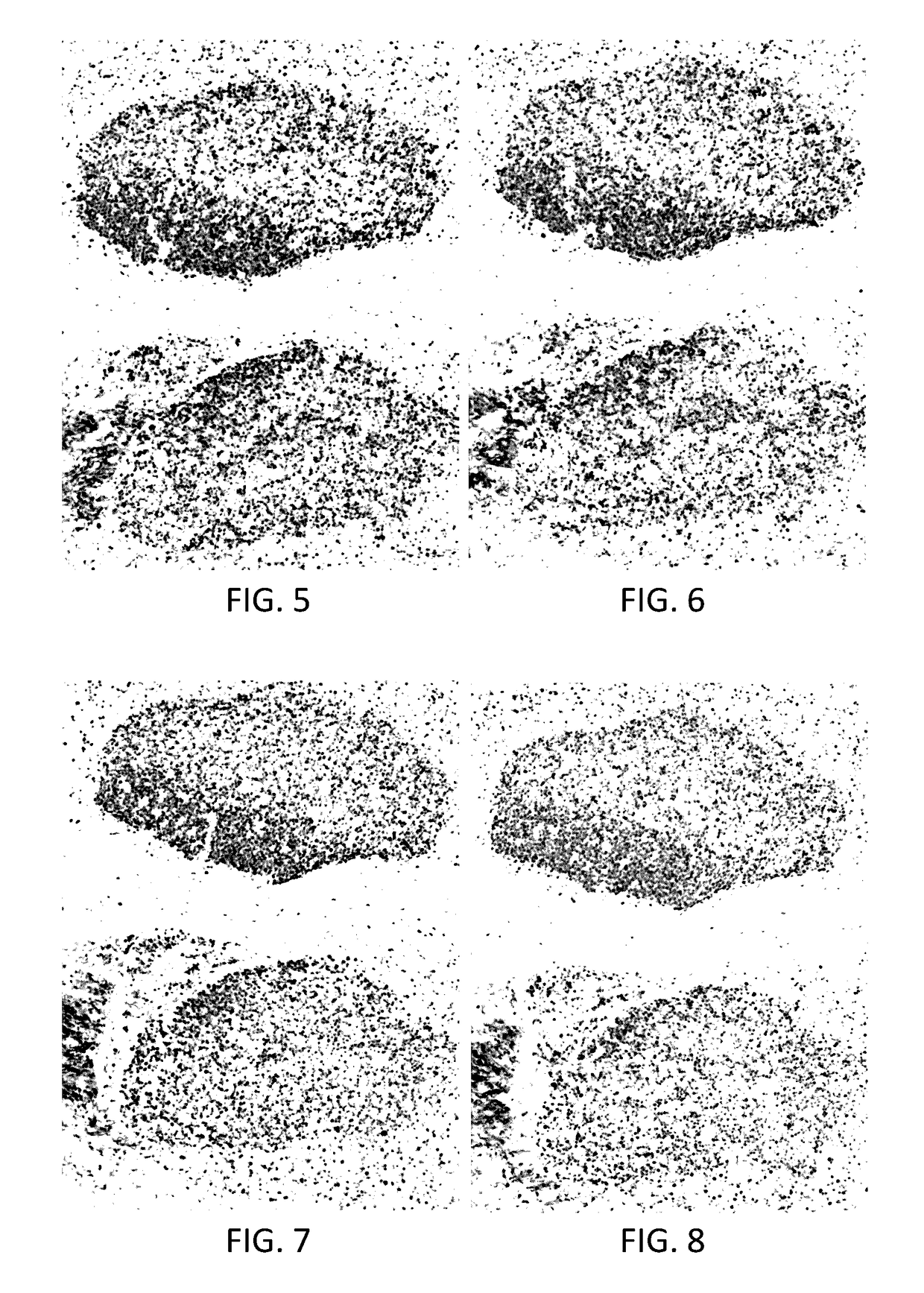Polymer stabilization of chromogen solutions
a technology of chromogen solutions and polymer stabilizers, applied in the field of composition, to achieve the effect of sufficient stability
- Summary
- Abstract
- Description
- Claims
- Application Information
AI Technical Summary
Benefits of technology
Problems solved by technology
Method used
Image
Examples
working embodiments
VII. Working Embodiments
[0118]The following examples are provided to exemplify certain details of working embodiments. A person of ordinary skill in the art will appreciate that the present invention is not limited to those specific features exemplified by these examples.
A. General Procedures
[0119]1. Polymer Screening
[0120]Polymers were screened for their impact on DAB sulfate precipitation formation by combining an enhanced DAB base solution containing a set amount of the polymer with select molar ratios of potassium hydrogen sulfate, KHSO4, relative to DAB. The enhanced DAB base solution used comprised 5.5 mM DAB.4HCl, 10 mM imidazole, 10 mM 2-hydroxypyridine, 1 mM sodium metabisulfite and 0.05% w / v Brij 35 at pH=2.3±0.1. The potassium hydrogen sulfate concentrations screened were 2.75 and 8.0 mM. The solutions were mixed vigorously at room temperature for 15 seconds and then stored at 2-8° C. to induce DAB sulfate precipitation. Solutions were monitored for physical changes (i.e....
example 1
[0126]Candidate polymers were screened for their impact on DAB sulfate precipitation formation by combining an enhanced DAB base solution containing a set amount of the polymer with select molar ratios of potassium hydrogen sulfate, KHSO4, relative to DAB. The enhanced DAB base solution used comprised 5.5 mM DAB.4HCl, 10 mM imidazole, 10 mM 2-hydroxypyridine, 1 mM sodium metabisulfite and 0.05% w / v Brij 35 at pH=2.3±0.1. The potential potassium hydrogen sulfate screening concentrations were 0, 1.37, 2.75 and 8.0 mM. The solutions were mixed vigorously at room temperature for 15 seconds and then stored at 2-8° C. to induce DAB sulfate precipitation. Solutions were monitored for physical changes (i.e. color or precipitation). The candidate solutions were analyzed by HPLC before and after sulfate addition to confirm changes in DAB concentration relative to 2-hydroxypyridine as an internal standard. A summary of results are shown in Table 2 below.
[0127]Exemplary polymers (dextran sulfat...
example 2
[0130]This particular example concerns using amine polymers in the disclosed composition. Amine polymers had a wide range of influence on DAB sulfate precipitate formation. Amine polymers are believed to form salts with the sulfate counteranion reducing frequency of DAB sulfate formation and / or help reduce the DAB sulfate particle size. DAB sulfate precipitation was not observed with DAB chromogen solutions containing linear polyethyleneimine (PEI), branched PEI or polyallylamine (PAA) polymers upon addition of either 2.75 or 8.0 mM KHSO4. The influences of linear PEI polymer concentration (wt %) was examined in this process. A 2.5 kDa linear PEI was used as a 4 kDa HCl salt and varied from 0.1 to 5.0 wt % in the chromogen solution (see Table 3). The linear PEI inhibited DAB sulfate precipitation over the entire polymer concentration range at 2.75 mM KHSO4. DAB sulfate precipitate was only observed with 8.0 mM KHSO4 at 0.1 wt % PEI. Linear and branched PEI polymers were examined fro...
PUM
| Property | Measurement | Unit |
|---|---|---|
| Fraction | aaaaa | aaaaa |
| Fraction | aaaaa | aaaaa |
| Fraction | aaaaa | aaaaa |
Abstract
Description
Claims
Application Information
 Login to View More
Login to View More - R&D
- Intellectual Property
- Life Sciences
- Materials
- Tech Scout
- Unparalleled Data Quality
- Higher Quality Content
- 60% Fewer Hallucinations
Browse by: Latest US Patents, China's latest patents, Technical Efficacy Thesaurus, Application Domain, Technology Topic, Popular Technical Reports.
© 2025 PatSnap. All rights reserved.Legal|Privacy policy|Modern Slavery Act Transparency Statement|Sitemap|About US| Contact US: help@patsnap.com



